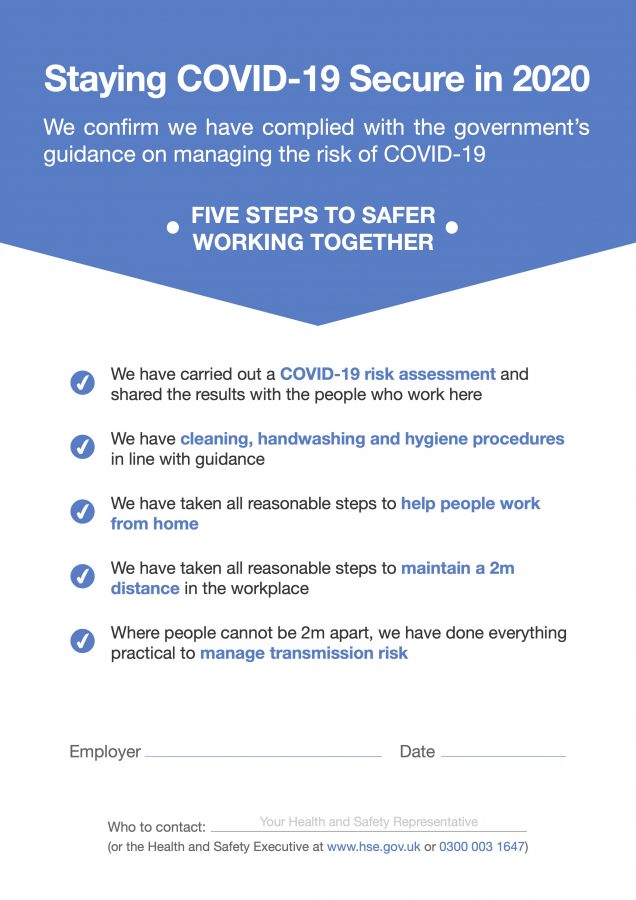Government issues Covid Secure advice for business
The UK Government has now issued its advice to businesses in England to prepare for a return to work where possible.
This was mentioned by the Prime Minister during his address to the nation on Sunday and in his address to the House of Commons on Monday.
The advice from the Department for Business, Energy and Industrial Strategy, may be useful to businesses operating in Scotland who have an eye on the future, and that is why we produce it here.
The Scottish Government retains the same message that we should stay at home and save lives, so it is not encouraging the return to work that is being promoted south of the border.
The new government guidance covers 8 workplace settings which are allowed to be open, from outdoor environments and construction sites to factories and takeaways.
5 key points
This sets out practical steps for businesses focused on 5 key points, which should be implemented as soon as it is practical:
1. Work from home, if you can
All reasonable steps should be taken by employers to help people work from home. But for those who cannot work from home and whose workplace has not been told to close, our message is clear: you should go to work. Staff should speak to their employer about when their workplace will open.
2. Carry out a COVID-19 risk assessment, in consultation with workers or trade unions
This guidance operates within current health and safety employment and equalities legislation and employers will need to carry out COVID-19 risk assessments in consultation with their workers or trade unions, to establish what guidelines to put in place. If possible, employers should publish the results of their risk assessments on their website and we expect all businesses with over 50 employees to do so.
3. Maintain 2 metres social distancing, wherever possible
Employers should re-design workspaces to maintain 2 metre distances between people by staggering start times, creating one way walk-throughs, opening more entrances and exits, or changing seating layouts in break rooms.
4. Where people cannot be 2 metres apart, manage transmission risk
Employers should look into putting barriers in shared spaces, creating workplace shift patterns or fixed teams minimising the number of people in contact with one another, or ensuring colleagues are facing away from each other.
5. Reinforcing cleaning processes
Workplaces should be cleaned more frequently, paying close attention to high-contact objects like door handles and keyboards. Employers should provide handwashing facilities or hand sanitisers at entry and exit points.
A downloadable notice (shown below) is included in the documents, which employers should display in their workplaces to show their employees, customers and other visitors to their workplace, that they have followed this guidance.
You can find all the UK advice here.
